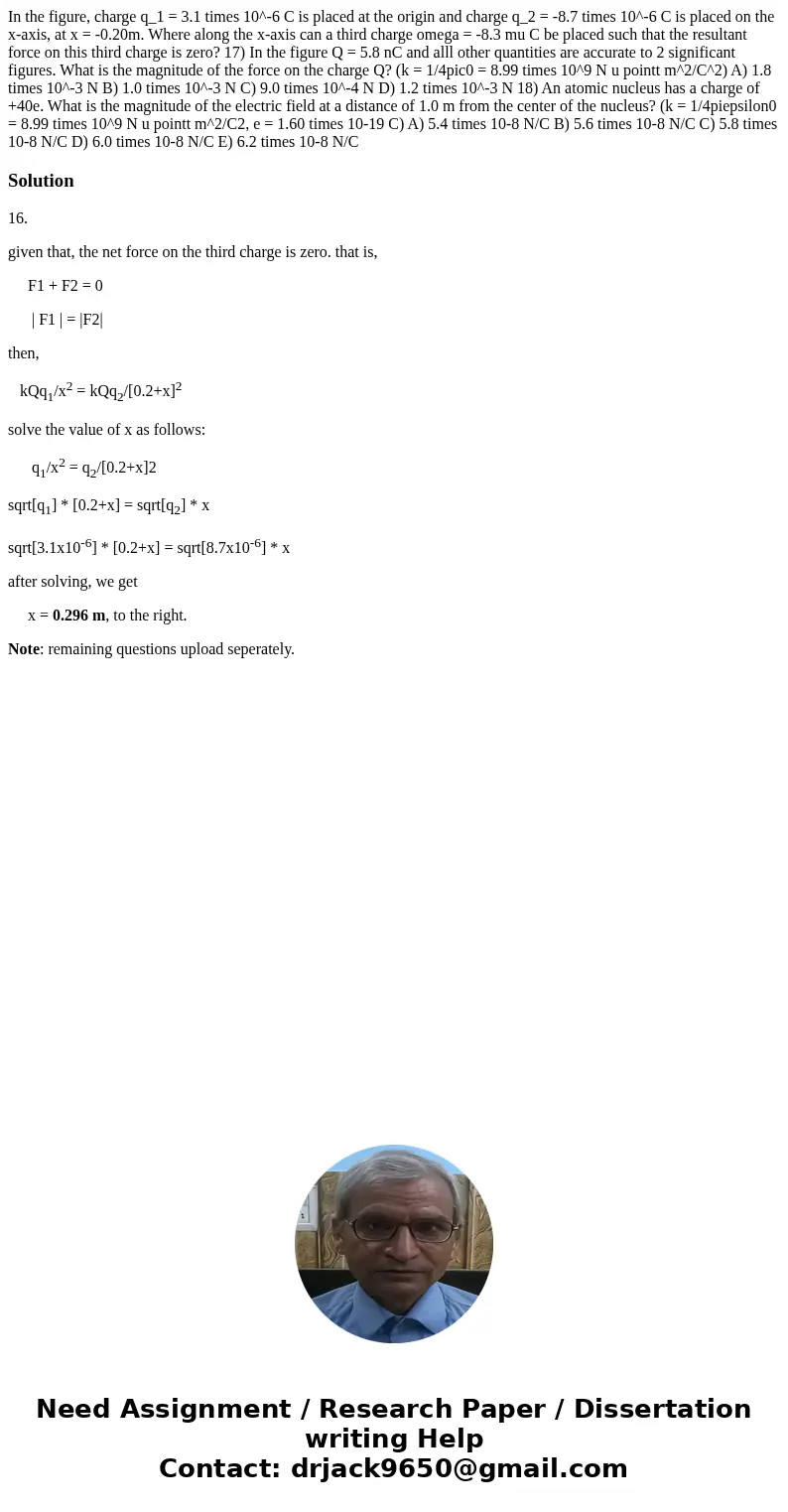In the figure charge q1 31 times 106 C is placed at the ori
In the figure, charge q_1 = 3.1 times 10^-6 C is placed at the origin and charge q_2 = -8.7 times 10^-6 C is placed on the x-axis, at x = -0.20m. Where along the x-axis can a third charge omega = -8.3 mu C be placed such that the resultant force on this third charge is zero? 17) In the figure Q = 5.8 nC and alll other quantities are accurate to 2 significant figures. What is the magnitude of the force on the charge Q? (k = 1/4pic0 = 8.99 times 10^9 N u pointt m^2/C^2) A) 1.8 times 10^-3 N B) 1.0 times 10^-3 N C) 9.0 times 10^-4 N D) 1.2 times 10^-3 N 18) An atomic nucleus has a charge of +40e. What is the magnitude of the electric field at a distance of 1.0 m from the center of the nucleus? (k = 1/4piepsilon0 = 8.99 times 10^9 N u pointt m^2/C2, e = 1.60 times 10-19 C) A) 5.4 times 10-8 N/C B) 5.6 times 10-8 N/C C) 5.8 times 10-8 N/C D) 6.0 times 10-8 N/C E) 6.2 times 10-8 N/C
Solution
16.
given that, the net force on the third charge is zero. that is,
F1 + F2 = 0
| F1 | = |F2|
then,
kQq1/x2 = kQq2/[0.2+x]2
solve the value of x as follows:
q1/x2 = q2/[0.2+x]2
sqrt[q1] * [0.2+x] = sqrt[q2] * x
sqrt[3.1x10-6] * [0.2+x] = sqrt[8.7x10-6] * x
after solving, we get
x = 0.296 m, to the right.
Note: remaining questions upload seperately.

 Homework Sourse
Homework Sourse